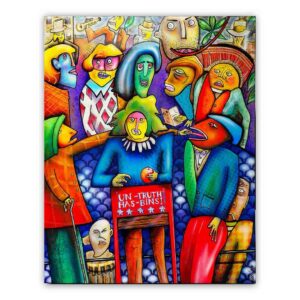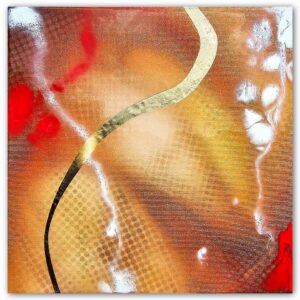- [email protected]
- +353 (0)86 224 0139
- Free Shipping Worldwide
How Art Therapy Can Help You Heal
While art itself takes on many forms and channels, the therapeutic benefits of art prevails in all its mediums. Here we look at Art Therapy to Help People Heal.
Art Therapy to Help People Heal
Art has numerous ways of impacting people and influencing them in a way that other forms of expression can’t compare. While creativity takes on many forms and channels, the therapeutic context of its existence prevails in all its mediums.
Any type of therapy refers to a treatment that enriches lives by exploring integrative mental health and psychotherapeutic techniques. By combining the creative art process and mental well-being, art therapy to help people heal can unlock many doors. The therapeutic prospect of art entails effective support for personal and relational growth.
Artistic therapy uses an approach to emotional wellness that improves cognitive functioning and mental and physical health. By utilising creativeness, you get to experience life as a new person who sees and experiences things as they were never able to before.
Art therapy opens many doors for general wellbeing and is regarded as a fun, communicative, and engaging activity. It is a creative form of expression that is different for different people while still being able to provide the same emotional, physical, and mental benefits.
Besides the obvious therapeutic benefits of creativity, therapy also reduces anxiety and stress and enhances social resilience and skills. The ultimate end goal of any therapeutic intervention is to help those in need to explore exactly what they are looking for, be it their personal or mutual goals.
"It’s not what you look at that matters; it’s what you see."
Henry David Thoreau
Modern therapeutic art techniques, like any other kind of creativity, enable people explore their creative processes and discover their true selves.

How Does Art Therapy Work?
Art therapy takes on numerous techniques, including, but not limited to, painting, drawing, colouring, sculpturing, music, dance, and more. By letting you explore your knack for art, the treatment aims for you to gain some personal insight along the way and discover more about yourself.
It enables you to express yourself and how you feel without limiting to words or sentences. In short, through exploring creativity you uncover themes, patterns, issues, and insights that were previously not there.
The best part about modern art therapy is that it does not limit expression to having a professional artistic ability. Anyone willing to dig deeper into themselves can take on artistic activities with the help of a professional. Your kinesthetics, perceptual, symbolic, and spiritual self comes into play by focusing on integrative methods.
Art therapy lets you communicate in a very unconventional way that doesn’t solely rely on verbal affirmation alone. The entire experience is often seen as liberating and exceptional as it is no longer limited to the bounds of language.
Creativity is An Expression of Self
The primary theory behind art therapy is letting people express themselves and uncover wellbeing through art. In 2017, a study showcased how creativity contributes to creating a warm atmosphere and environment that made people feel safe, secure, and connected inside a hospital setting. It explored the presence of visual arts and how greatly it contributed to everyone’s well-being and offered obvious therapeutic benefits of art.
“Something is always born of excess: great art was born of great terrors, great loneliness, great inhibitions, instabilities, and it always balances them.”
Anaïs Nin
The therapist may use multiple methods and different approaches to reach the ultimate goal of self-expression. The session can revolve around the basic definition of therapy and treatment, all while focusing on visual representation. During artistic activities you will be able to focus on the problems that concern you and deal with them and in a healthy way.
It has grown in popularity over the years because of its unique approach to tackling traumatic experiences. Not only do you get to express your inner self without words, but you also get to find more details about yourself that you weren’t aware of previously.
What Can You Expect From Art Therapy?
The therapeutic benefits of creativity can be used to treat numerous conditions in children and adults alike. Many practices have now encouraged art therapy in schools and other centres to promote active engagement and better expression for kids.
Similarly, expressing feelings through art therapy can help people cope with a wide range of issues. These can range from sadness, fury, PTSD, panic, and other disorders that individuals are hesitant to address due to mental illness stigma.
It can also be a place for domestic abuse trauma patients to deal with the memory in a controlled environment and practice to help tackle depression, anxiety, stress, among other psychological issues.
In addition to all this, research also indicates that paintings and drawing, along with other forms of art, can help in jogging memories, improve connections of the brain, and improve one’s mood.
Additionally, through emotional intelligence art therapy can help to build your confidence particularly in social interactions, both in your personal life and with others in the workplace.
Healing Beyond the Scope of Mental Illness
The crucial point to remember here is that any form of therapy also requires consistency to deliver exceptional results like other forms of treatment.
Therapeutic healing power should not be confined to persons suffering from mental illnesses; many other groups of people can benefit from engaging in this activity as well.
You can express yourself creatively and focus on things that are important to you. You can also use art therapy to distract yourself from something or to transfer your focus to a more useful practise.
Creating art itself is a relaxing experience, but painting your feelings onto a canvas is what commissioned artists are hired to accomplish. It is a truly remarkable gift and ability, and art therapy allows you to explore the modern artist’s perspective.
Even if you are totally healthy, you can benefit from art therapy because its scope of practise extends beyond merely mending mentally ill people.

Conclusion: Is Art Therapy for You?
You might be wondering if the therapeutic benefits of art are valuable to you and whether you should or shouldn’t take up art therapy. The short answer is that art therapy is beneficial for people of all ages and is widely used in schools, rehab facilities, senior centres, and hospitals.
Nevertheless, always check that your therapist has the professional credentials required before commencing any sessions.
It opens up the possibility of experiencing new things and dealing with discomfort effectively and should be considered irrespective of your current state.
If you enjoyed this article, please subscribe to my mailing list and share it with your friends, family, and business associates if you think they would be interested. As an independent artist, this kind of support is invaluable.
The time you spent reading this blog is greatly appreciated, thank you.
DISCLAIMER. The information provided in this article is designed to provide helpful information on the subjects discussed. This content is not meant to be used, nor should it be used, to diagnose or treat any medical condition. For diagnosis or treatment of any medical problem, consult your own doctor.
Quotes:
Henry David Thoreau (American naturalist, essayist, poet, and philosopher),
Anaïs Nin (French-Cuban American diarist, essayist, novelist and writer of short stories and erotica).
Citation:
Stine L. Nielsen, Lars B. Fich, Kirsten K. Roessler & Michael F. Mullins (2017) How do patients actually experience and use art in hospitals? The significance of interaction: a user-oriented experimental case study, International Journal of Qualitative Studies on Health and Well-being, 12:1, DOI: 10.1080/17482631.2016.1267343
Art That Speaks Volumes: Sea Spray
Because art has a way of moving us and swaying our mood, Sea Spray offers a stunning luxurious mix of vivid blue colours that puts your body and soul on the coast side. It conveys thoughts of tranquillity and symbolizes prosperity, a perfect serene setting to help you unwind. The restful colours are mind-clearing and tie the entire room together with their restorative and composed design.
Enjoy the many therapeutic benefits of art and all its offerings by investing in your living space for the better. Art can create a calming atmosphere which can help you in a number of ways, ranging from relieving stress to giving you peace of mind. Commission an artist to bring your vision of a happy place to life.
Adrian Reynolds, ‘Ren’, is a contemporary artist based in Dublin, Ireland. His paintings are a response to the world around us. A world that changes faster than ever before. His work explores colour, form, and texture, placing it at the intersection of abstraction and representation. His work has been featured in Ireland, the UK, and the US.
Latest Artwork
-
Bullets Travel Distance & Time
Abstract Art Paintings €1,000.00Add to basketBullets Travel Distance & Time | Acrylic Painting By Adrian Reynolds
-
The Perception of Narrative
Abstract Art Paintings €800.00Add to basketThe Perception of Narrative | Fine Art Acrylic Painting By Adrian Reynolds
-
Iridescent Dream
Abstract Art Paintings €240.00Add to basketIridescent Dream | Acrylic Painting By Adrian Reynolds
-
Blue Nebula
Abstract Art Paintings €240.00Add to basketBlue Nebula | Acrylic Painting By Adrian Reynolds




